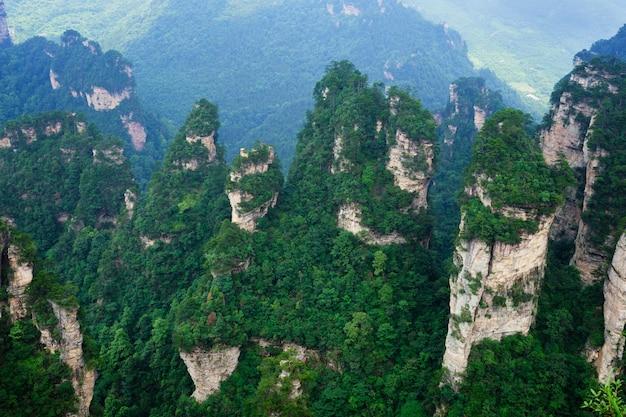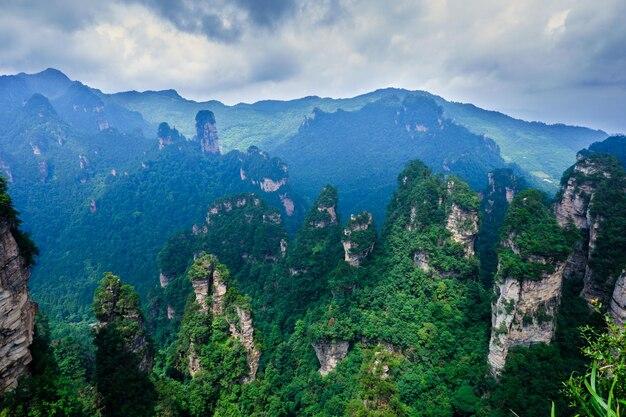India, a land of diverse cultures and breathtaking landscapes, holds a wealth of natural heritage that is worth cherishing and protecting. From snow-capped mountains to dense forests, from cascading waterfalls to serene beaches, the country is blessed with an abundance of natural wonders. In this blog post, we will delve into the concept of natural heritage and explore why it is essential to preserve these magnificent treasures for generations to come.
So, what exactly is natural heritage? It refers to the remarkable natural features, areas, and ecosystems that hold significant ecological, scientific, cultural, and aesthetic value. It encompasses everything from national parks and wildlife sanctuaries to diverse flora and fauna. Natural heritage sites not only provide shelter to a myriad of plant and animal species but also serve as a source of inspiration and solace for mankind. In a world where urbanization and modernization are increasingly encroaching upon nature, the need to protect and conserve these pristine environments has become more vital than ever.
Now that we understand the importance of natural heritage, let’s explore the exceptional natural sites that India proudly showcases to the world. With numerous UNESCO World Heritage Sites, India has secured a firm place on the global map of natural wonders. From the remarkable Kaziranga National Park, home to the endangered Indian rhinoceros, to the awe-inspiring Western Ghats, a biodiversity hotspot, the country boasts a rich tapestry of natural treasures. In this blog post, we will not only discover these breathtaking sites but also learn how they are being safeguarded against various threats.
So, join us on this journey through the natural heritage of India as we appreciate its beauty, unravel its secrets, and discover why it is our duty to protect these invaluable gifts of nature.

What is the Natural Heritage of India
India, a land of diverse cultures and breathtaking landscapes, boasts a natural heritage that is as rich as its history. From the snow-capped peaks of the Himalayas to the pristine beaches of Goa, the country’s natural beauty is truly awe-inspiring. Let’s dive into the fascinating world of India’s natural heritage and explore its many wonders.
Rich Biodiversity: India’s Ecological Extravaganza
India is a biodiversity hotspot, home to a staggering array of flora and fauna. With its varied topography and climate, the country supports a wide range of ecosystems, from lush rainforests to arid deserts. The Western Ghats, a UNESCO World Heritage Site, is a biodiversity hotspot teeming with endemic species. And let’s not forget about the magnificent Royal Bengal Tiger, the national animal of India, which can be spotted in its natural habitat in the country’s various national parks.
Majestic Mountains: The Himalayas and Beyond
The crown jewel of India’s natural heritage is undoubtedly the mighty Himalayas. Spanning several states, including Jammu and Kashmir, Himachal Pradesh, and Uttarakhand, these majestic mountains are a sight to behold. With their snow-clad peaks, sweeping valleys, and serene lakes, the Himalayas offer a haven for adventure enthusiasts and spiritual seekers alike. Whether you’re trekking to the source of the Ganges or enjoying the breathtaking views of the Kanchenjunga, the third highest peak in the world, the Himalayas will leave you spellbound.
Serene Waterways: Rivers that Shape a Nation
India’s natural heritage is intertwined with its rivers, which hold immense cultural and historical significance. The Ganges, often referred to as the lifeline of India, is not just a river but a symbol of spirituality for millions of people. Flowing through the northern plains of the country, it is considered sacred by Hindus, who believe that a dip in its holy waters can wash away their sins. The Brahmaputra, India’s mighty river, flows through the northeastern states, carving its way through breathtaking gorges and lush valleys. These rivers are not just water bodies but essential elements that have shaped the cultural fabric of India.
Enchanting Forests: Nature’s Masterpieces
India’s forests are a treasure trove of natural wonders. From the dense jungles of the Western Ghats to the mangrove forests of the Sundarbans, these woodlands are home to a myriad of species. The Gir Forest in Gujarat is the last refuge of the endangered Asiatic lion, while the Sundarbans is famous for its royal Bengal tigers and unique ecosystem. The lush forests of the Northeastern states are a paradise for birdwatchers and nature enthusiasts, with their vibrant avian population and rich biodiversity. Step into these enchanting forests, and you’ll feel like you’ve entered a different world altogether.
Stunning Coastlines: Where the Ocean Meets the Land
India’s coastline stretches over 7,500 kilometers and is dotted with pristine beaches, vibrant coral reefs, and picturesque fishing villages. The Andaman and Nicobar Islands, located in the Bay of Bengal, are a tropical paradise known for their turquoise waters, white sandy beaches, and vibrant marine life. In the state of Kerala, the backwaters offer a unique ecosystem where tranquil canals and lagoons merge with the Arabian Sea. Whether you’re sunbathing in Goa’s famous beaches or exploring the marine biodiversity in the Lakshadweep Islands, India’s coastlines are a haven for beach lovers and water enthusiasts.
India’s natural heritage is a tapestry of diverse landscapes, vibrant ecosystems, and awe-inspiring wonders. From the soaring Himalayas to the tranquil backwaters, every corner of the country holds something special. Exploring India’s natural heritage is not just a journey through stunning landscapes; it’s a chance to connect with the soul of a nation, to understand its people and their deep-rooted connection with nature. So pack your bags, put on your hiking boots, and get ready to embark on an adventure of a lifetime in the captivating realm of India’s natural heritage.

FAQ: What is the Natural Heritage of India
Which is the first World Heritage site in India
The first World Heritage site in India is the Kaziranga National Park, designated in 1985. This magnificent park is located in the Indian state of Assam and is renowned for its efforts in conserving the one-horned rhinoceros.
What is the most visited World Heritage Site
Topping the list as the most visited World Heritage Site in India is the Taj Mahal. Known as the epitome of love, this architectural marvel attracts millions of visitors each year who are mesmerized by its beauty, history, and the romantic tale of Emperor Shah Jahan and his beloved wife Mumtaz Mahal.
Why do we need heritage
Heritage is not just about preserving historical buildings or natural wonders; it represents our collective past, our culture, and our identity. It connects us to our roots and provides invaluable knowledge about the world. By preserving our heritage, we ensure that future generations can appreciate and learn from it.
How many World Heritage Sites are there in India
India is blessed with a rich cultural and natural heritage, boasting a total of 40 World Heritage sites recognized by UNESCO. These include iconic landmarks such as the Red Fort, the Qutub Minar, and the Western Ghats.
Which is the mixed World Heritage site in India
The Mountain Railways of India, which include the Darjeeling Himalayan Railway, the Nilgiri Mountain Railway, and the Kalka-Shimla Railway, are recognized as mixed World Heritage sites in India. These quaint railways not only showcase impressive engineering feats but also offer breathtaking views of the surrounding landscapes.
How many World Heritage sites are there
Globally, there are currently 1,121 World Heritage sites spread across 167 countries. These sites vary from natural wonders to cultural landmarks, highlighting the diverse beauty and significance of our planet.
Why do we need heritage sites
Heritage sites are essential because they provide a tangible link to our past. They allow us to better understand our ancestors, their achievements, and the challenges they faced. Additionally, heritage sites attract tourism, generate economic opportunities, and foster a sense of pride and appreciation for our shared heritage.
What is the natural heritage of India
The natural heritage of India encompasses the country’s stunning landscapes, biodiversity hotspots, and unique ecosystems. From the majestic Himalayan mountains to the serene backwaters of Kerala, India’s natural heritage boasts an incredible range of flora, fauna, and geographical wonders.
What is religious heritage
Religious heritage refers to the sacred sites, temples, mosques, churches, and other religious structures that hold immense cultural and historical significance. These sites not only serve as places of worship but also provide insights into the religious practices, beliefs, and architectural styles of different time periods.
How can we protect our natural heritage
Protecting our natural heritage requires collective effort and sustainable practices. Conservation efforts should focus on preserving habitats, preventing illegal wildlife trade, promoting eco-tourism, and raising awareness about the importance of biodiversity. Additionally, community involvement, government initiatives, and enforcement of environmental laws play crucial roles in safeguarding our natural legacy.
Which National Parks are World Heritage sites
India is proud to have several national parks that have achieved the prestigious status of World Heritage sites. These include the Keoladeo National Park (formerly known as Bharatpur Bird Sanctuary), the Sundarbans National Park, and the Nanda Devi and Valley of Flowers National Parks.
Why is natural heritage important
Natural heritage is vital because it holds immense ecological, scientific, and aesthetic value. It provides a glimpse into the planet’s biodiversity, supports ecosystem services such as clean air and water, and contributes to the overall well-being of both wildlife and humans. Preserving natural heritage ensures a sustainable future for generations to come.
Remember, our natural heritage is not just a part of our past, but a gift for the future. Let’s cherish and protect it for all to enjoy!
